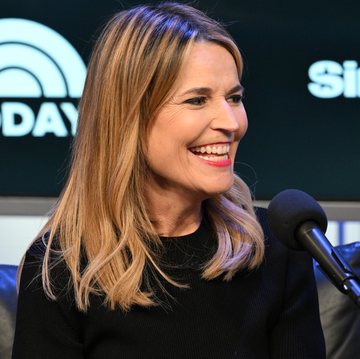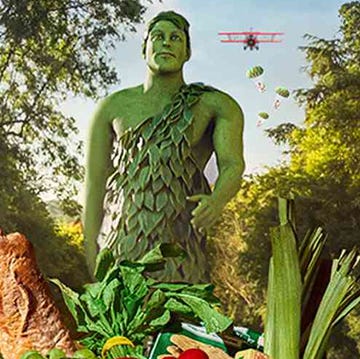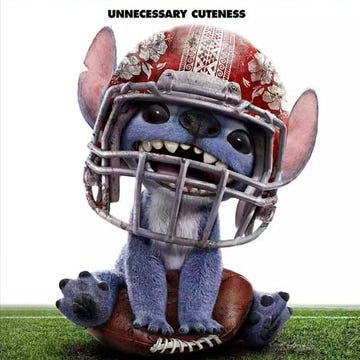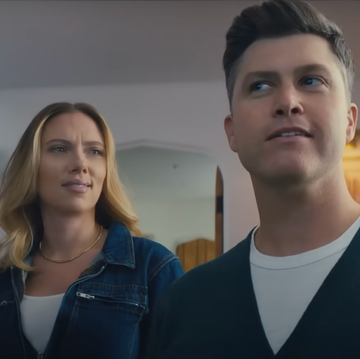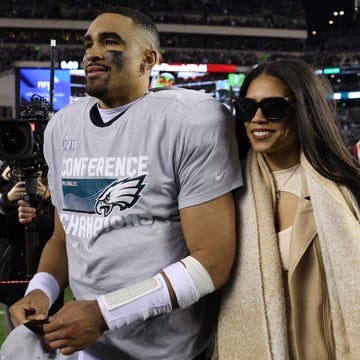1Rings were awarded at the first Super Bowl.
 MediaNews Group/Pasadena Star-News via Getty Images//Getty Images
MediaNews Group/Pasadena Star-News via Getty Images//Getty ImagesThe first Super Bowl rings were awarded in 1966 to the Green Bay Packers. They featured a 0.5-carat diamond surrounded by white gold. The rings were designed by Packers head coach Vince Lombardi and teammates Willie Davis and Bob Skoronski.
2Rings are given to more than just players.
 Kevin Mazur//Getty Images
Kevin Mazur//Getty ImagesSuper Bowl rings go to players, coaches, trainers, executives and general staff. To account for everyone who makes up the "team," there are typically 150+ rings made per year. On occasion, cheerleaders and family members of players will also get rings.
Advertisement - Continue Reading Below
3Even the losing team receives rings.
 Jostens
JostensSome may call it a pity award, but the losers of the Super Bowl still receive rings to honor their championship win for the American Football Conference (AFC) or National Football Conference (NFC). Don’t worry; they're not as flashy as the 'World Champion' rings that the winners receive.
RELATED: Here's What the Losing Super Bowl Team Will Take Home in 2025
4They don’t need to be returned.
 Rob Kim//Getty Images
Rob Kim//Getty ImagesUnlike the FIFA World Cup which has to be returned to Zurich, Switzerland after every World Cup, Super Bowl ring holders get to keep their bands to do with them what they wish. For some, that means selling them for a pretty penny.
Advertisement - Continue Reading Below
5They look different every year.
 Variety//Getty Images
Variety//Getty ImagesEvery year, the jewelry company behind the rings speaks to members of the winning team to get input for the ring's design. There are a few things the ring almost always includes: the name or logo of the winning team, the words, "World Champions" and an outline of a Lombardi trophy to signify how many Super Bowls the team has won throughout history.
6Two teams are tied for most Super Bowl rings.
 MediaNews Group/Boston Herald via Getty Images//Getty Images
MediaNews Group/Boston Herald via Getty Images//Getty ImagesThe New England Patriots and Pittsburgh Steelers both have six Super Bowl rings. But in terms of most rings owned by an individual player, Tom Brady takes the top spot with seven Super Bowl rings — five of which are MVP bands.
Advertisement - Continue Reading Below
7Estimated cost for a ring is between $30,000 to $50,000.
 NFL
NFL 8NFL contributes around $750,000 for 150 rings to be made.
 TIMOTHY A. CLARY//Getty Images
TIMOTHY A. CLARY//Getty ImagesTo break it down, the NFL pays around $5,000 per ring for up to 150 rings to be made. However, with the price per ring being over six times that, the winning team is left to cover the remaining balance.
Advertisement - Continue Reading Below
9They're primarily made of yellow or rose gold and diamonds.
 Eliyahu Parypa//Getty Images
Eliyahu Parypa//Getty ImagesUp until 2011, every Super Bowl ring was made with gold. That is until the Green Bay Packers won their fourth Super Bowl title and decided to try platinum on for size. As expected, the diamonds have only gotten bigger over time. The first Super Bowl ring featured a 0.5-carat diamond while the 2024 ring featured 14.8 carats.
10Jostens has made 38 of the 58 Super Bowl rings.
 ESPN
ESPNJostens, the brand known for sports apparel, graduation gowns and class rings, is the maker behind 38 of the last 58 Super Bowl rings. Tiffany & Co. has also made a few rings, including the 1987 Washington Redskins band and most recently, the Seattle Seahawks 2014 ring.
Advertisement - Continue Reading Below
11They take around four months to make.
 Westend61//Getty Images
Westend61//Getty ImagesFrom game win and design to creation and distribution, Super Bowl rings typically take around four months to make, meaning recipients usually receive them sometime in June. It takes a while to select the jeweler and weigh in on design options, but once they have the green light, production typically takes four to six weeks.
12The MVP recieves a special ring.
 Jostens
JostensDuring the fourth quarter of the Super Bowl, fans and a select panel of media members can vote for the Most Valuable Player. Whoever wins, typically the winning team's quarterback will receive a one-of-a-kind Super Bowl ring with their name, number, and the letters 'MVP' on it.

Kate Franke (she/her) is an editorial assistant in the Hearst Lifestyle Group, covering for Woman's Day and Good Housekeeping. She loves all things lifestyle, home, and market related. Kate has a BAJMC in Magazine Media and BA in Writing from Drake University. She is a proud ASME alum whose work has appeared in Food Network Magazine, The Pioneer Woman Magazine, Better Homes & Gardens, Modern Farmhouse Style, Beautiful Kitchens & Baths, and more. Next to writing, Kate’s two favorite things are chai lattes and pumpkin bread!
Advertisement - Continue Reading Below
Advertisement - Continue Reading Below
Advertisement - Continue Reading Below

